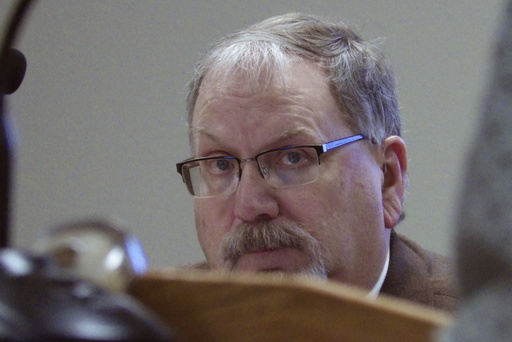BISMARCK, N.D. — North Dakota’s long-standing initiatives to support agriculture by modifying weather patterns through “cloud seeding” are encountering significant backlash within the state legislature. New proposals are aiming to outlaw this practice, which has gained traction in many western states and attracted international attention to North Dakota, one of the country’s least populated regions.
Cloud seeding involves aircraft dispersing tiny silver iodide particles into clouds to decrease hail size and enhance precipitation, providing much-needed moisture for crops in the state’s semi-arid environment. Critics argue that cloud seeding is ineffective, potentially harmful, and misleading. They highlight that several counties have opted out of weather modification efforts, with some recent withdrawals occurring just last fall.
“We’re weary of government attempting to control our weather,” expressed Doug Stangeland, a farmer from Williams County, during a state Senate session. “It’s time for nature to take its course. Let the creator of the weather do what they do.”
North Dakota’s hail suppression initiative is recognized as the longest-running aerial cloud seeding program globally, having utilized aircraft for this purpose since the early 1960s, as noted by Darin Langerud, director of the Atmospheric Resource Division within the state’s Department of Water Resources.
Recently, a bill introduced by Republican Senator Todd Beard proposed abolishing weather modification practices, classifying them as a misdemeanor. Violators could potentially face penalties of up to 30 days in jail and/or fines reaching $1,500.
Roger Neshem, a farmer from the Berthold area and former member of his county’s weather modification authority, expressed that local concerns were overlooked by officials, particularly regarding alleged flights outside permitted areas. “I think it’s appropriate to make this a misdemeanor and illegal,” he stated.
Counties fund the cloud seeding program, which operates in conjunction with state support, for approximately 15 cents per acre. Last year, four participating counties collectively spent around $800,000 on the initiative. The program predominantly runs from June through August.
Currently, cloud seeding operations take place in two counties and parts of a third, including Bowman County. Residents have advocated for the benefits of these efforts, citing reduced hail damage to crops, homes, and businesses. Notably, a majority of voters in Bowman County chose to maintain their weather modification authority during a 2016 referendum.
Research indicates positive outcomes from cloud seeding when compared to non-seeded or control areas, including increased rainfall, less crop damage from hail, and better wheat crop yields, according to Langerud. However, some scientists maintain that the actual effectiveness of cloud seeding is ambiguous, given the vast and unpredictable nature of the atmosphere.
Last year, Langerud’s agency formalized a partnership with the South Korean government for training, research, and development in cloud seeding techniques. Delegations from Argentina and Romania have also visited North Dakota over the last two years to participate in training programs.
The state’s Atmospheric Resource agency has further collaborations with the University of North Dakota’s aviation program to train intern pilots for their cloud seeding efforts. Over the years, this initiative has seen more than 400 intern pilots receive training through the program, according to Langerud.
Weather Modification International’s Vice President of Flight Operations, Jody Fischer, argued that the proposed bill would directly hinder collaboration among private sectors, local governments, and state entities that have propelled North Dakota to a leading position in this industry.
Langerud contends that the opposition to cloud seeding is fueled by misinformation. Stangeland raised concerns about possible environmental damage and toxicity from silver iodide.
Langerud defended the materials used in cloud seeding, asserting that silver iodide is remarkably effective, requiring only minimal quantities. He emphasized that the program’s management is largely handled at the local level, reinforcing his belief that it should remain there. Other states in the U.S. such as California, Colorado, Idaho, Nevada, New Mexico, Texas, Utah, and Wyoming, as well as Alberta, Canada, also operate similar weather modification programs, according to a document from North Dakota’s Atmospheric Resource Board.


